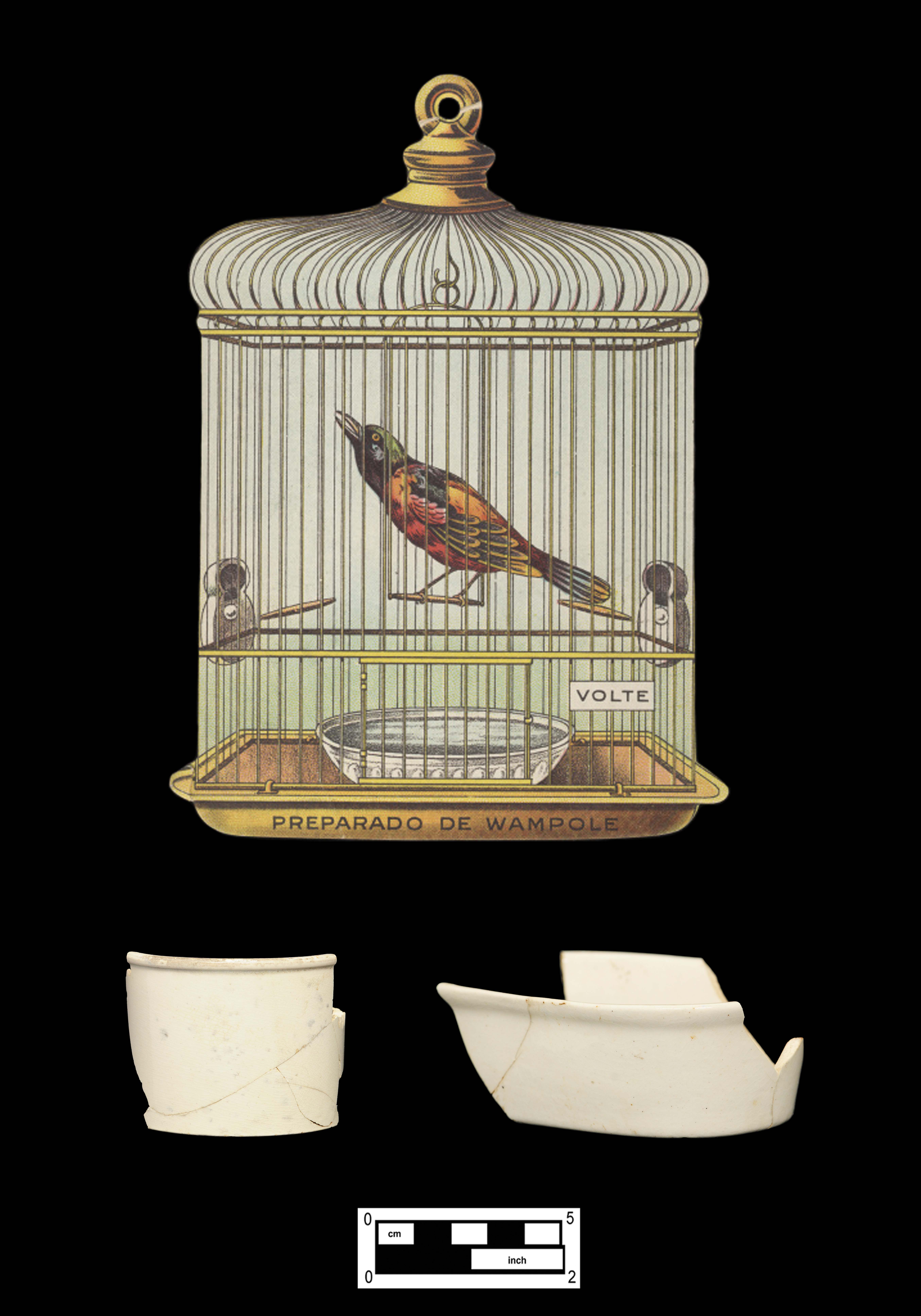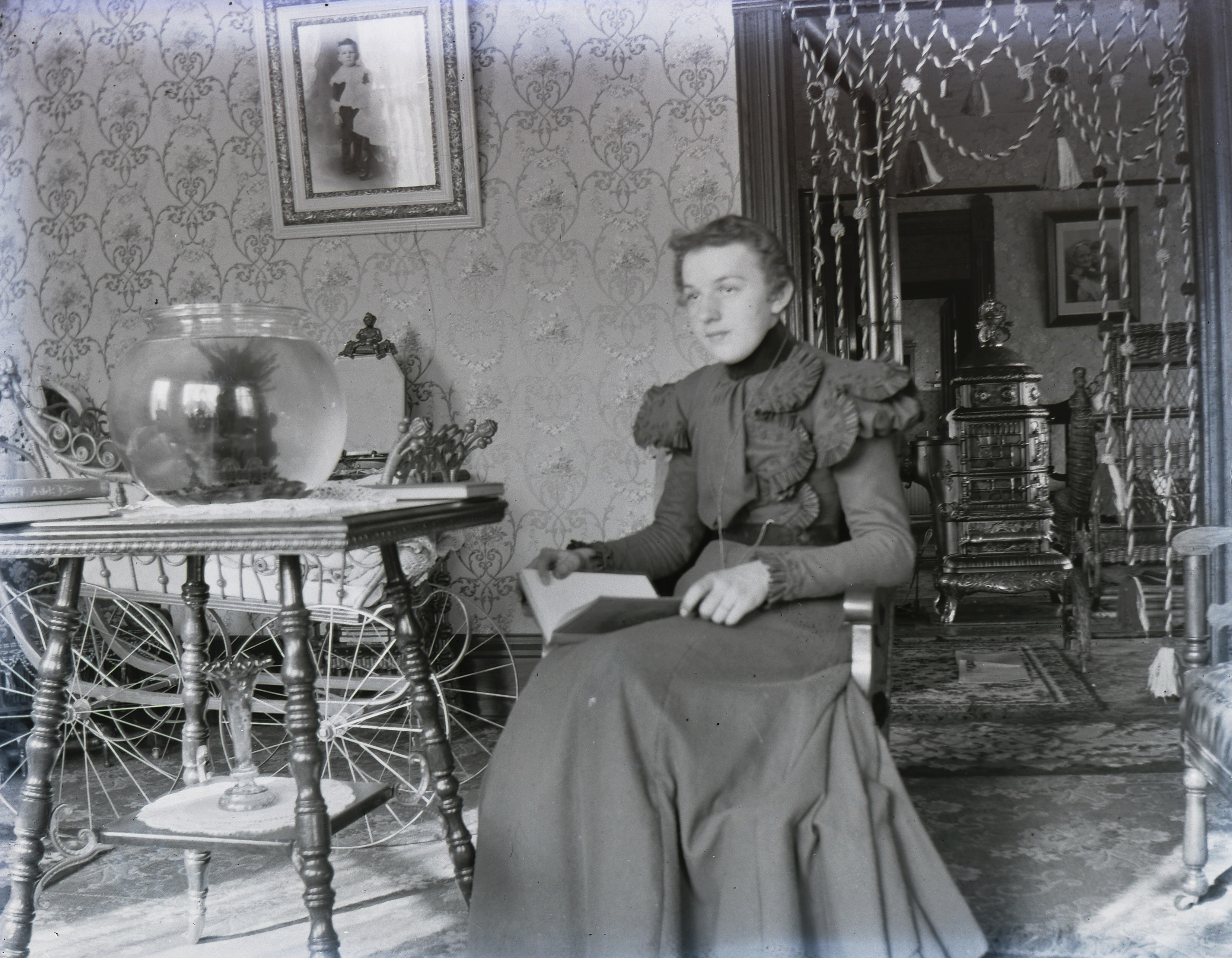Two artifacts suggest that pets were part of this household. Both objects appear to date to the second half of the nineteenth century, making it difficult to connect them directly with a specific family.
Goldfish Globe

Pieces of a large glass globe were recovered, and due to the large amounts of lamp glass encountered, these pieces were initially thought to be part of a lamp globe. After a search of period trade catalogs revealed no comparable lighting devices, we dove deeper and matched the form with nineteenth-century goldfish bowls (Cat # 8.30.36, 8.31.23, 8.33.13). Portions of the thick lead glass rim and body mended, giving us a sense of the bowl’s shape and characteristics. The bowl features a wide folded rim that measures approximately 7.5 inches in diameter. As the bowl was being made, the edge of the rim was folded onto itself, overlapping and reinforcing the outer half inch of the opening.
Newspaper advertisements show that American glassworks were manufacturing fish bowls by the early nineteenth century. Goldfish were the most common fish advertised and kept in glass bowls. Fish globes in a variety of sizes with and without a large flared foot were offered in the Gillinder and Sons catalog from the late nineteenth century. The common style of globe had a wide mouth and the shoulder of the bowl extended out beyond the rim, similar to the recovered fragments. The 1895 spring and summer issue of the Montgomery Ward & Company catalog illustrated this same type of bowl and referred to it as a hanging fish globe. The catalog offered hanging globes in three sizes to hold from a half to one gallon of water. 1
Bird Cage Bath

While this small oval dish of refined earthenware may have been put to various uses—perhaps as a soap dish or toy serving piece—it most closely matches baths made for cage birds (C-0469). Oval-shaped bird cage bath dishes were available in ceramic or opaque white glass. 2 3 Bath dishes usually measured about 4 to 5 inches in length—large enough for a song bird to splash around in, yet small enough to fit in the bottom of the cage during bath time. Although many different types of birds were kept as pets, canaries and mockingbirds were among the most popular cage birds throughout the nineteenth century because of their wider range of songs.
One additional ceramic vessel of indeterminate function is made of thin-bodied, refined earthenware and appears similar to the bath dish. This cylindrical vessel, with a slightly thickened rim and narrow groove beneath the rim, may be a small jar for ointments or cosmetics; however, it also might be a seed or treat cup from the bird cage (C-0458).
The Presence of Pets

While many people kept animals, traces of pets are sometimes difficult to identify among the wide range of discarded household artifacts. The discovery of pieces from a fish bowl and bird cage bath confirms that some of this household’s occupants were pets.
References
- Montgomery Ward & Co., Montgomery Ward & Co. Catalogue and Buyers’ Guide Spring & Summer 1895 (New York, NY: Dover Publications, Inc., 1969), 545 ↩
- M. Lelyn Branin, The Early Makers of Handcrafted Earthenware and Stoneware in Central and Southern New Jersey (Cranbury, NJ: Associated University Presses, Inc., 1988), 200 ↩
- Montgomery Ward & Co. Catalogue, 545 ↩